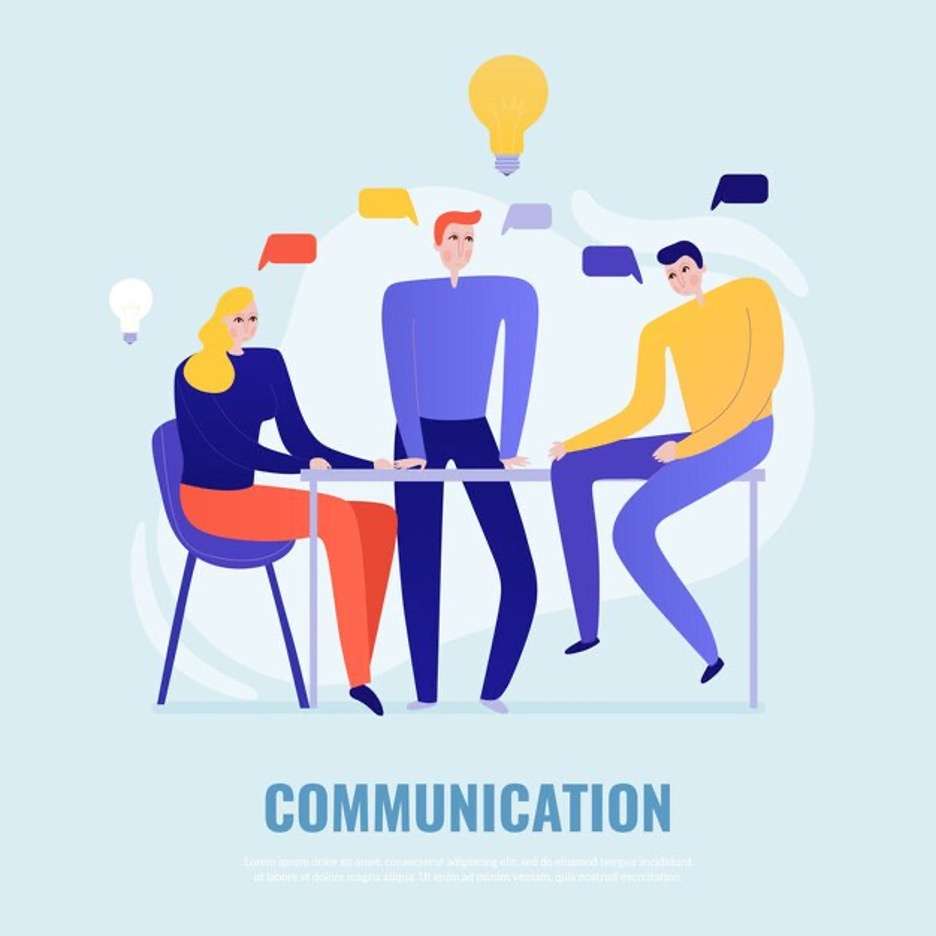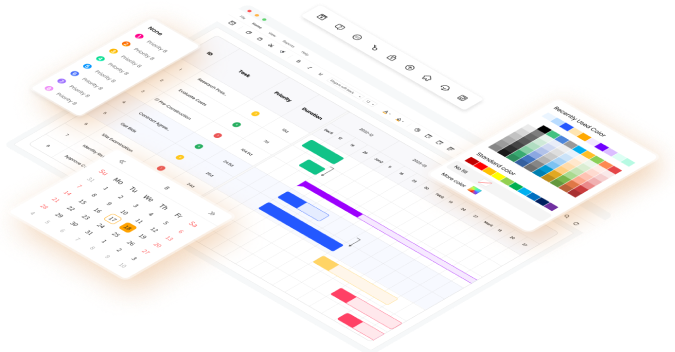
Communication is like talking or sharing information. It helps people understand each other. In projects, communication is particularly important. It's like making sure everyone involved knows what's happening and what they need to do.
This article will talk about communication in project management. It will cover what communication is, different types of it, why it's important, ways to do it well, and how to make a plan for communication in project management. Explore how better communication can make projects run smoother and be more successful.
What Is Communication in Project Management?
Communication in project management is like ensuring everyone gets the right information at the right time. It's not just about talking but also about sending and receiving messages in a way everyone understands. Think of it as a process that involves sharing important details and updates with the people who need to know.
This communication management is a big part of the PMBOK, a project management guidebook. It's essential because it helps avoid misunderstandings, keeps everyone on the same page, and ensures that things run smoothly in a project. Project communication management ensures everyone knows what's happening and what they need to do to make the project successful.
Types of Communication in Project Management
Communication in projects involves various ways of sharing information. There are three main processes in project communication management: planning, managing, and monitoring communications.
- Planning communication. This process focuses on creating a strategy for communication in the project. It includes deciding who needs what information, when they need it, and how it will be given to them. It's like planning to talk with the right people at the right times.
- Management communications. Once the plan is set, this process puts the plan into action. It involves sending messages, meeting, and sharing information using emails, phone calls, discussions, and memos. It's like actually talking and sharing information based on the plan made.
- Monitoring communication. This process monitors how well the communication plan is working. It checks if everyone is receiving and understanding the messages. It's like making sure that the talking and sharing of information are happening as planned.

In projects, communication happens through phone calls, emails, meetings, discussion boards, or written memos. Each method has strengths and is used depending on what needs to be communicated and to whom.
For faster communication, it's advisable to use free and instant messaging apps like Viber, Telegram, Messenger, and the like. However, using emails or memorandums works better for more formal communications.
Importance of Communication for Project Management
Effective communication is vital in project management because it keeps everyone informed and focused on their tasks. Here's why communication is crucial:
- Team diversity. Project teams usually consist of diverse professionals with different backgrounds and expertise. Good communication ensures that each professional understands their role and responsibilities, fostering collaboration and harmony within the team.
- Leadership role. Project managers play a significant role in communication. They spend a lot of time communicating with their team, guiding them, and ensuring the project's success. Clear and consistent communication from project managers sets the tone for the team's effectiveness.
- Skills improvement. It's not just the project managers; everyone involved should strive to enhance their communication skills. Professionals should feel comfortable asking questions when unsure and sharing ideas to contribute to the project's progress. Better communication among team members leads to smoother workflows and better outcomes.
Strong communication practices within a project team ensure everyone is on the same page, contributing effectively to the project's success.
Techniques for Effective Communication
Effective communication in project management involves using various techniques to convey information efficiently. Here are three main communication techniques commonly used:

- Interactive communication. This technique involves active participation and a two-way exchange of information among team members. It's like having discussions, brainstorming sessions, or face-to-face meetings where everyone can share ideas, ask questions, and clarify doubts. Interactive communication fosters collaboration and encourages open dialogue within the team.
- Push communication. Push communication sends information from one sender to multiple receivers without expecting immediate feedback. Examples include emails, memos, or reports. It's like sharing project updates or important details with the team or stakeholders to inform them about progress or changes.
- Pull communication. In pull communication, information is stored centrally, and team members can access it when needed. It's like having a project repository or a centralized platform where documents, resources, or data related to the project are available for team members to access at their convenience. This technique ensures everyone can access essential information without flooding them with unnecessary details.
Using these communication techniques strategically based on the nature of the information and the team's needs helps ensure effective information flow, foster collaboration, and keep everyone aligned toward the project's goals.
How To Make a Project Management Communication Plan
A project management communication plan is crucial for effective information exchange and successful project outcomes. Here's how to develop one:
Step 1: Plan for the Project
Start communication planning right from the project's planning phase. Encourage active involvement and communication among team members. This generates diverse ideas and fosters a sense of involvement and a better understanding of capabilities. Use this phase to discuss and detail the steps for effective communication methods.
Step 2: Determine Communication Methods
Design communication methods once roles and responsibilities are assigned. Use various communication modes such as group chats, written communication, meetings, or phone calls based on the type of information to be shared. For instance, group chats and written communication are useful for discussions and sharing information, while meetings and calls are suitable for detailed or brief technical interactions.
Step 3: Share Project Goals
Keep the team updated with the latest project goals derived from previous achievements. Clear project objectives aid effective communication and allow team members to suggest more efficient methods.
Step 4: Listen to Your Team
Actively listen to the team members as they often possess problem-solving skills and insights into challenges. Encouraging their suggestions fosters a sense of involvement and contributes to smoother progress.

Step 5: Keep Everyone Updated
Regular updates are vital to ensure effective progress and save time. Communicate changes in methods, procedures, risks, and issues promptly. This involvement creates a sense of responsibility among team members.
Step 6: Monitor Employee Performance
Monitoring employee performance helps identify problems and address them through effective communication. Analyzing the cause of unmet targets aids in rectifying communication gaps and reallocating responsibilities based on team members' strengths, fostering dedication and improving outcomes.
Conclusion
Overall, effective communication for project management is important. It ensures clarity, collaboration, and progress. Planning communication from the project's start, choosing diverse communication methods, sharing goals, and listening to the team are vital. Regular updates and monitoring of employee performance enhance efficiency.
For streamlined communication plans, consider using Wondershare EdrawProj. Its versatile features assist in visualizing communication strategies that ensure project success. Strong communication practices empower your team and propel your projects towards successful outcomes. Consider EdrawProj to kickstart your effective communication planning journey.
A professional Gantt chart tool to plan, manage and track your projects, process and resources.



